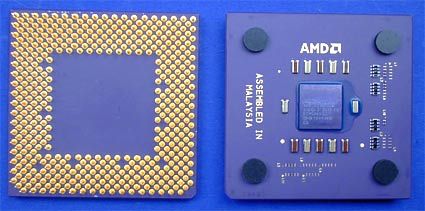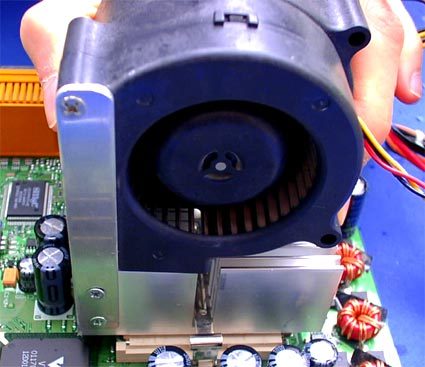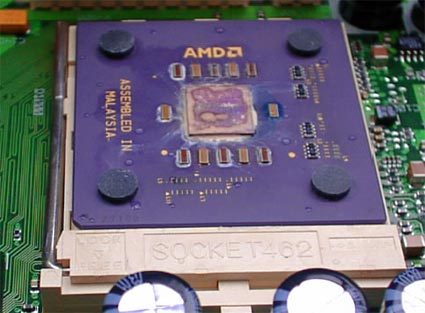Hot Spot: How Modern Processors Cope With Heat Emergencies
AthlonmP 1.2 GHz (Palomino) - System Crash / Thermal Diode Fails / CPU Dead
Just like AMD's mobile Athlon4 processors, AthlonMP is based on AMD's new 'Palomino'-core, which will also be used in the upcoming AthlonXP processor. This core comes equipped with a thermal diode that is required for Mobile Athlon4's clock throttling abilities. Unfortunately Palomino is still lacking a proper on-die thermal protection logic. A motherboard that doesn't read the thermal diode is unable to protect the new Athlon processor from a heat death. We used a specific Palomino motherboard, Siemens' D1289 with VIA's KT266 chipset. Siemens assured us that the thermal protection circuitry is definitely working on their motherboard. So far we only know of Asus' A7V266 motherboard to include the thermal protection circuitry also.
Those pictures cannot show you what happened by far as good as our test-lab video. A split second after the heat sink had been taken off the Palomino-Athlon, the system crashed. We then watched in horror as smoke clouds rose from the overheating core. The temperature measurement ensured us of what we had feared. No semiconductor survives almost 300 degrees Celsius / 580 degrees Fahrenheit. Palomino was dead.
We rushed to the telephone to confer with Siemens. The engineers assured us that what we had seen was for real. The thermal diode of Palomino is unable to react quickly enough. Only 1 degree/s is what the thermal diode is able to handle. That might be good enough for failing fans. A fallen off heat sink however will ensure a dead Athlon processor and possibly a damaged motherboard as well. What a serious disappointment!
We speculate that the thermal diode was basically included into the Palomino core because of Mobile Athlon4. A mobile processor requires a thermal protection and a clock throttling logic. However, AMD never designed this minimal thermal protection management to handle incidents like the complete failure of a heat sink.
Get Tom's Hardware's best news and in-depth reviews, straight to your inbox.
Current page: AthlonmP 1.2 GHz (Palomino) - System Crash / Thermal Diode Fails / CPU Dead
Prev Page Intel Pentium III 1 GHz - System Hang / CPU Alive Next Page Test Lab Video Shows Deficits Of AMD Processors

